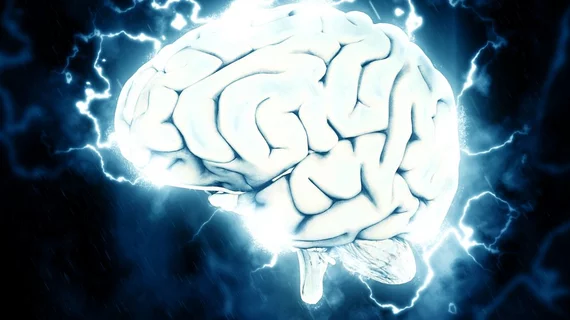AI combines with electricity to juice neuroscience
Mayo Clinic researchers have demonstrated an AI-based system for untangling the meandering routes taken by electric stimulation pulses delivered to a single region of the brain.
In a study published Sept. 2 in Plos Computational Biology, neurosurgeon Kai Miller, MD, PhD, and colleagues describe their work with the system on a patient with a brain tumor.
The aim of the investigation was to uncover interactions among and between brain regions affected by the electric current both directly and indirectly.
Prior research in this area assumed a form for how one brain area will respond to stimulation in another area, Miller and co-authors explain.
By contrast, their approach “discovers the shape of the response in time from the data.”
They call the set of the resulting discovered shapes “basis profile curves” and show a way to quantitatively reverse-engineer the shapes back onto the brain as a sort of map.
While the technique doesn’t have immediate clinical applications, it opens avenues for numerous neuroscientific inquiries, the authors suggest.
For example:
Inspecting recordings from a single site, our novel framework could be applied to behavioral rather than electrical stimulation. [In such a scenario], one could study higher order visual areas, like the fusiform gyrus, and examine responses to presented images of different semantic types. In such a study, one would replace stimulation pair groups with semantic stimulus groups (pictures of faces, houses, tools, etc.) to see how different semantic groups cluster together in production of the fusiform electrophysiological response.”
In coverage by Mayo’s news division, Miller says this type of algorithm may one day “help us to better treat patients with epilepsy, movement disorders like Parkinson’s disease, and psychiatric illnesses like obsessive compulsive disorder and depression.”
Co-author Klaus-Robert Mueller, PhD, a physicist and computer scientist at Technical University of Berlin in Germany and a member of Google Research’s brain team, comments that brain science supplies the most challenging datasets—and thus the most exciting sphere of inquiry—for medical AI developers and explorers.
The team is offering a downloadable code package for use by neuroscience researchers.
Senior author Dora Hermes, PhD, a Mayo Clinic biomedical engineer, says sharing their newly developed code is “a core part of our efforts” to help medical research at large.

